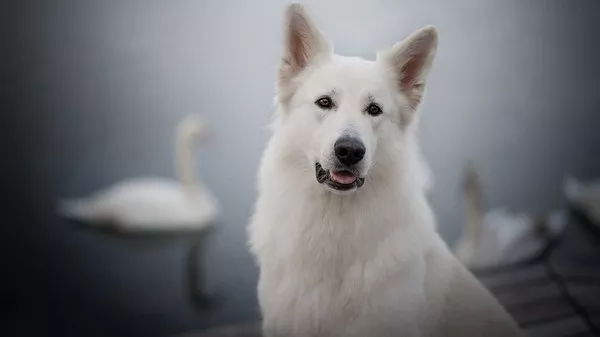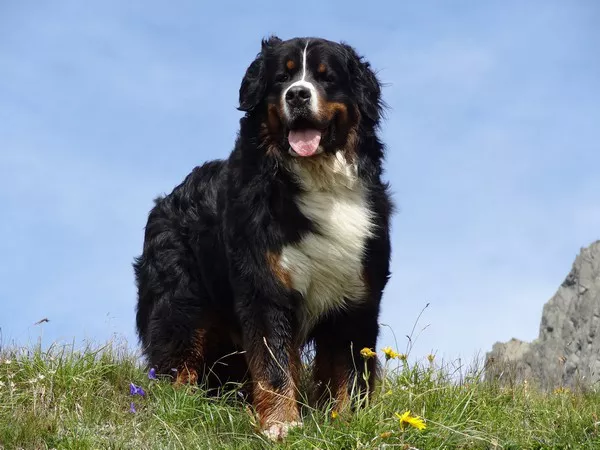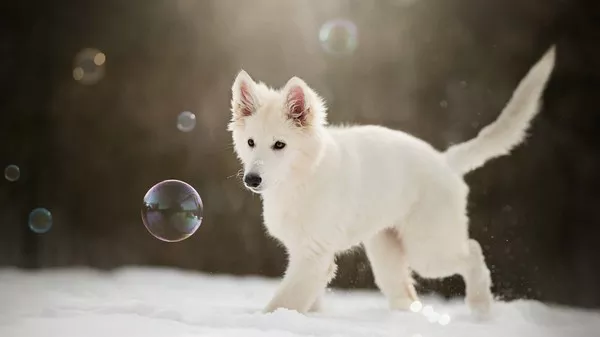In the diverse and intriguing world of dog breeds, the Schnauzer stands out for its distinctive appearance and personality. Among the various types of Schnauzers—Miniature, Standard, and Giant—there is a less commonly discussed variant known as the “Phantom Schnauzer.” This term is often used to describe a particular pattern in the breed that is both fascinating and somewhat misunderstood. In this article, we will delve into what a Phantom Schnauzer is, exploring its unique characteristics, genetics, and the implications for breeders and pet owners.
Understanding Schnauzers
Before we delve into the specifics of the Phantom Schnauzer, it is essential to understand the Schnauzer breed as a whole. Schnauzers are known for their distinctive bearded snout and bushy eyebrows, along with their alert and intelligent demeanor. The breed is categorized into three sizes:
Miniature Schnauzer: Standing 12-14 inches tall at the shoulder, this is the smallest of the Schnauzer varieties.
Standard Schnauzer: This medium-sized Schnauzer measures 17-20 inches at the shoulder.
Giant Schnauzer: The largest of the trio, standing 23.5-27.5 inches at the shoulder.
Each size of Schnauzer has its own set of characteristics and potential health issues, but all share a common heritage and general appearance.
The Phantom Schnauzer Explained
The term “Phantom Schnauzer” is not a formal breed designation but rather a description used by some enthusiasts to refer to Schnauzers with a specific coat color pattern. This pattern is characterized by a unique combination of colors that can create an effect reminiscent of a “phantom” or ghost-like appearance. Here’s a closer look at the key features and genetics behind this intriguing coloration.
Color Patterns
Schnauzers come in several recognized color patterns, including:
Salt and Pepper: A mix of black and white hairs that gives a salt-and-pepper appearance.
Black: Solid black coat.
White: Pure white coat.
Black and Silver: Black coat with silver markings on the legs, eyebrows, and other areas.
The Phantom Schnauzer, however, is characterized by a non-standard pattern. This pattern typically involves a mix of dark and light shades, often with a gradual transition or a blend of colors that creates a ghostly effect. These colors are not always recognized in official breed standards, which leads to some controversy and confusion among breeders and enthusiasts.
Genetics of the Phantom Pattern
The genetics behind the Phantom Schnauzer pattern are complex and not fully understood. In general, coat color and pattern in dogs are determined by multiple genes. The presence of different color patterns, including the Phantom Schnauzer, can result from various gene combinations and mutations.
In the case of the Phantom Schnauzer, it is believed that the pattern may be influenced by genes responsible for color dilution, as well as other genetic factors that are not yet completely elucidated. This makes the Phantom Schnauzer a fascinating subject for genetic research and breeding.
The Controversy Surrounding Phantom Schnauzers
The Phantom Schnauzer is not officially recognized by major breed registries such as the American Kennel Club (AKC) or the Fédération Cynologique Internationale (FCI). As a result, there is a fair amount of controversy surrounding this variant. Some breeders and enthusiasts view the Phantom Schnauzer as a unique and desirable variation, while others consider it a deviation from the breed standard.
Breeder Perspectives
For many breeders, maintaining the integrity of breed standards is paramount. Deviations from recognized patterns can lead to disputes about the desirability and health of the dogs. Breeders who focus on traditional Schnauzer standards may view the Phantom Schnauzer as a non-standard variation that could potentially impact the breed’s consistency.
On the other hand, some breeders and enthusiasts see the Phantom Schnauzer as an exciting development that adds diversity to the breed. They argue that new patterns and colors can be a natural part of a breed’s evolution and can contribute to the breed’s popularity and appeal.
Health and Welfare Concerns
One of the primary concerns related to the Phantom Schnauzer is the potential impact on the breed’s health. Any new or non-standard trait could potentially be linked to health issues, either directly or indirectly. Breeders and owners need to be aware of potential genetic problems associated with the Phantom pattern and ensure that dogs are bred responsibly.
In general, Schnauzers are known for their good health and longevity, but like all breeds, they can be prone to specific conditions. It is crucial for breeders to conduct thorough health screenings and genetic testing to minimize the risk of passing on hereditary conditions.
The Role of the Phantom Schnauzer in Popular Culture
The Phantom Schnauzer has captured the imagination of some dog lovers and has even made appearances in popular culture. Its unique appearance has made it a subject of interest for those who appreciate unusual and distinctive dog breeds.
See Also: Are Schnauzers Hyper?
Media and Literature
In literature and media, the Phantom Schnauzer has occasionally appeared as a subject of intrigue and fascination. Its unusual coloration has made it a favorite among those who enjoy exploring lesser-known aspects of dog breeds.
Community and Online Presence
Online communities and social media platforms have provided a space for enthusiasts to share their experiences and knowledge about the Phantom Schnauzer. These platforms have helped raise awareness about the breed’s unique characteristics and fostered discussions among breeders, owners, and fans.
Caring for a Phantom Schnauzer
Caring for a Phantom Schnauzer involves the same considerations as caring for any Schnauzer. However, due to the potential non-standard nature of the coat pattern, there may be some additional considerations for owners.
Grooming
Schnauzers require regular grooming to maintain their distinctive appearance. This includes brushing to prevent matting, trimming the beard and eyebrows, and regular baths. The grooming needs of a Phantom Schnauzer are similar to those of other Schnauzers, but owners should be attentive to any specific needs related to the coat pattern.
Training and Socialization
Schnauzers are known for their intelligence and trainability. They benefit from early socialization and consistent training. The Phantom Schnauzer, like other Schnauzers, should be exposed to various environments, people, and other animals to ensure well-rounded development.
Health Monitoring
Regular veterinary check-ups are essential for maintaining the health of any Schnauzer. Owners of Phantom Schnauzers should be aware of any breed-specific health issues and work closely with their veterinarians to address any concerns. Genetic testing and health screenings can help identify and manage potential issues related to the Phantom pattern.
Conclusion
The Phantom Schnauzer is a fascinating and enigmatic variation of the Schnauzer breed. Its unique color pattern and the controversies surrounding it make it a subject of considerable interest within the dog breeding community. Whether you are a breeder, an owner, or simply a dog enthusiast, understanding the Phantom Schnauzer involves exploring both its genetic background and its role within the broader context of Schnauzer history and development.
As we continue to learn more about the Phantom Schnauzer, it is essential to approach this variant with curiosity and responsibility. By maintaining a focus on the health and welfare of these dogs and fostering ongoing research, we can ensure that the Phantom Schnauzer remains a cherished and respected part of the Schnauzer legacy.
Related Topics:






















